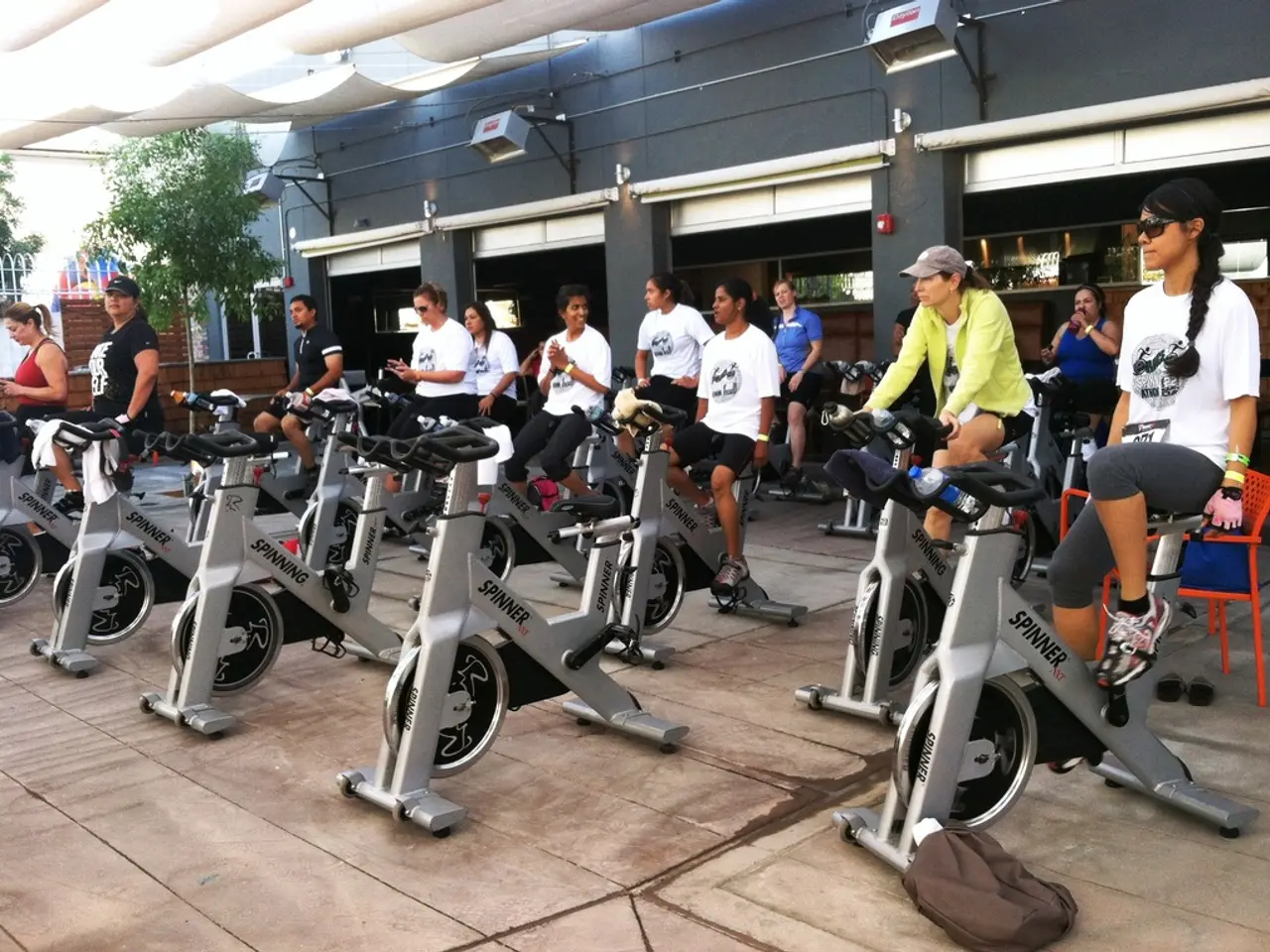Assessing the Essential Skills Every Man After Age 40 Needs to Dominate
Staying in shape as you age is crucial for maintaining overall health and well-being. For men over 40, a well-rounded fitness regimen is essential to ensure strength, power, endurance, and cardiovascular fitness. According to recent fitness guidelines, the top seven fitness tests for men in this age group measure various aspects of physical health and performance.
1. Max Vertical Jump
The Max Vertical Jump assesses lower-body explosiveness, coordination, and reactive power by measuring how high you can jump from a standing position. It indicates quickness, speed, and the ability to generate force rapidly in the legs.
To perform the Max Vertical Jump, stand tall with feet shoulder-width apart near a wall or a Vertec device, swing arms back, dip into a quarter squat, and jump straight up, reaching as high as possible. A score of 20+ inches is considered excellent, 15-19 inches is good, and under 15 inches needs work.
2. Mile Time Run
The Mile Time Run tests cardiovascular health and endurance by timing how fast you can run a mile. This reflects heart strength, lung efficiency, and overall stamina.
To complete the Mile Time, warm up with dynamic stretches and a light jog, start the run at a steady pace, use a track or GPS watch for accurate measurement, push yourself in the final quarter-mile, and record the finishing time. A finishing time under 7:30 is considered excellent, 7:30-9:00 is good, and over 9:00 needs work.
3. Pushups
Pushups measure upper body pushing strength and endurance, particularly focusing on the chest, shoulders, and triceps.
To perform Max Push-Ups, start in a high plank, lower chest nearly to the floor, and press back without letting hips sag. A score of 40 or more is considered excellent, 25-39 is good, and under 25 needs work.
4. Pullups
Pullups evaluate upper body pulling strength and muscular endurance, targeting the back, biceps, and forearms.
To perform Max Pull-Ups, grip a pull-up bar, pull chest toward the bar while keeping elbows tight to sides, and lower with control. A score of 12 or more is considered excellent, 6-11 is good, and under 6 needs work.
5. Dips
Dips test upper body pushing strength and endurance, working muscles around the chest, shoulders, and triceps.
6. Sit-to-Stand Test
The Sit-to-Stand Test measures lower body functional strength and endurance by counting how many times you can rise from a seated position within a set time, indicating leg muscle strength and joint function.
7. Forearm Plank (Hover Test)
The Forearm Plank (Hover Test) assesses core muscle strength and endurance by timing how long you can hold a plank position with proper form. A strong core supports overall stability and injury prevention.
To perform the Max Plank Hold, start on your forearms with elbows under your shoulders, extend legs behind you, and hold the position as long as possible without letting hips drop or pike. A score of 3 minutes or more is considered excellent, 2-3 minutes is good, and under 2 minutes needs work.
Together, these tests cover different domains of fitness:
| Fitness Test | Measures Aspect | Muscles/Systems Targeted | |-----------------------|------------------------------------|------------------------------------------| | Max Vertical Jump | Lower-body power & explosiveness | Legs, hips, coordination | | Mile Time | Cardiovascular endurance | Heart, lungs, overall stamina | | Pushups | Upper body pushing strength & endurance | Chest, shoulders, triceps | | Pullups | Upper body pulling strength | Back, biceps, forearms | | Dips | Upper body pushing strength | Chest, shoulders, triceps | | Sit-to-Stand Test | Lower body functional strength | Legs, hips, practical joint function | | Forearm Plank (Hover) | Core strength and endurance | Abdominals, lower back, stabilizers |
These tests collectively help men over 40 identify strengths and weaknesses in power, muscular endurance, core stability, and cardiovascular fitness, offering a well-rounded assessment to guide training and monitor progress.
Embracing a yoga routine alongside these fitness tests can further promote longevity and mindfulness. Yoga improves flexibility, balance, and mental focus, complementing strength and endurance gains from exercise and workouts (fitness-and-exercise).
Staying true to a consistent health-and-wellness regimen not only enhances overall fitness levels but also reduces the risk of various health issues as one ages. According to science, regular exercise plays a significant role in maintaining good health and longevity.
A well-rounded fitness program, combining these tests and yoga, can contribute to maintaining mens-health by improving cardiovascular health, strengthening muscles, and cultivating mental clarity, ultimately paving the way to a fitter and healthier future.
Engaging in regular exercise, practicing yoga, and embracing a mindful approach to health and wellness can help men over 40 ensure they maintain strength, power, endurance, and cardiovascular fitness, as well as enhancing their quality of life and promoting longevity.




